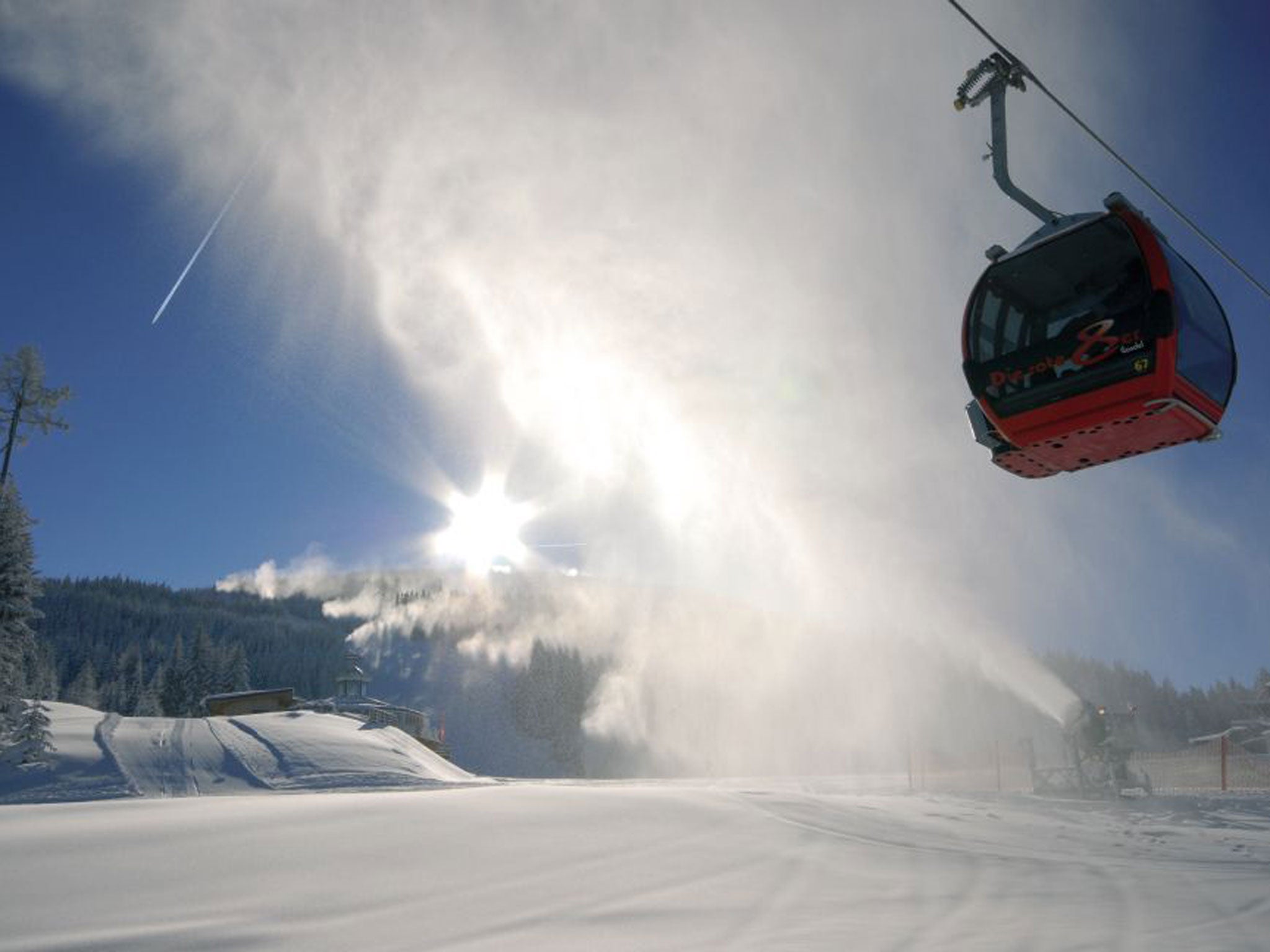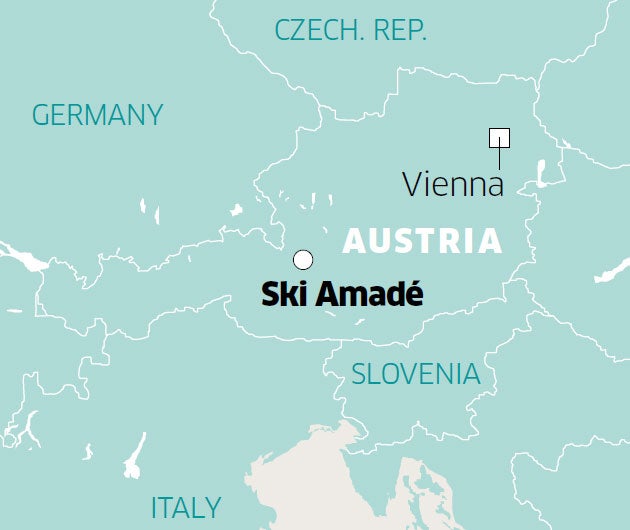Ski Amadé: Orchestral manoeuvres in the light
The Mozart theme is very harmonious, but it's the new G-Link gondola that wows at this Austrian ski resort, says Stephen Wood

Now that the East End of London has moved upmarket, cockney rhyming slang no longer has much currency. So you may have forgotten its word for drunkenness. It is Mozart – or sometimes Brahms. Why? Because "Mozart-and-Liszt" rhymes with pissed.
The composer's name has a curious, all-but-synonymous association in the Salzburgerland region of Austria, too. There I discovered, on an early-season ski trip, that Mozart is a piste.
For a dead musician to win naming rights to an airport is not exceptional: Liverpool airport is called John Lennon, after all. And it's fair enough for the gateway to Salzburgerland's skiing to brand itself as "Salzburg Airport WA Mozart", since the composer was born in that city in 1756. But once you head up into the mountains, the Wolfgang Amadeus Mozart things begin to get out of hand.
Less than an hour from the airport is Austria's biggest ski zone, comprising the slopes of a group of villages in the Salzach Valley. Its name is Ski Amadé, a contraction of Amadeus no less cheeky than calling Mozart "Wolfie". And in Wagrain, one of main villages, there are two lifts and a piste bearing the name "Flying Mozart".

Ski Amadé's marketing department exploits the Mozart connection to the full. But it also has other strings to its bow, so to speak. Last season it launched a continuing, "Learn to ski in three days" promotion for adults; this was so successful that nobody claimed the refund available to persistent non-skiers. This season, guests are invited to experience the five senses of skiing via installations and events on Ski Amadé's extensive slopes. That the "sound" theme includes listening to Mozart is to be expected; the ski-in/ski-out massage parlour on the snow above Wagrain to express "touch" comes as more of a surprise.
The Ski Amadé area has a massive 760km of pistes and there is nothing British skiers like more than a big ski area. But we expect the skiing to be joined up, in a lift-linked ski area where each piste is accessible without leaving the mountain. That is not the case at Ski Amadé. Skiing all its slopes involves several bus journeys along the valley to get from one village's lift base to the next.
So the really big story from Ski Amadé this season is the advent of the G-Link gondola, whose two 130-person cable cars span the village of Wagrain, connecting its skiing with that of neighbours Flachau, St Johann and Alpendorf. As a result, Ski Amadé now has 120km of linked pistes. In the near future, another new lift is expected to push that total to 275km.
Ski Amadé stretches along the Salzach Valley in Salzburgerland and beyond into the neighbouring region of Styria. The setting is attractive, but the mountains are not high: only in Bad Gastein and Sportgastein does the skiing go much above 2,000m, and around Wagrain it is mostly below the tree line. There are descents of 1,000m vertical to the villages, but working along the valleys usually involves a zigzag of short lift rides and descents.
From my base at Alpendorf ("Alpine Village"), set at 800m, I had to take a gondola and four chairlifts to get to the long red piste that drops down towards Wagrain. But that was no chore: the mid-December snow was excellent and conscientiously groomed; the sky was clear blue and the undulating terrain ensured constantly changing views. Despite the ideal conditions, and the proximity to Salzburg, the slopes were pleasantly quiet.
About halfway down to Wagrain, there is a mid-station for the lift that climbs the Grafenberg, one of the two mountains which give the new gondola its name. Here the G-Link departs from a dramatic, timber-clad terminal building on its long sweep across the valley to the Griessenkareck, the other "G" in the link. There is a support tower close to each end of the route, but between those points the two cars – which look like a cross between a viewing platform and a hovercraft – hang from 2km of cables, which because of their weight droop down towards the valley floor.
The idea of lift-linking the ski slopes is about 40 years old, according to Christoph Baumann, the general manager of the Wagrain lift company. It arose when the company started running shuttle buses along the valley floor, but only in 2008 did the planning of the G-Link begin. The spur was the creation of another mid-station for the lift running up the Griessenkareck. "I thought: 'Why not have a lift connecting those two points?'" Baumann says. Just looking at that route, he feared that the lift line would pass over buildings, making the necessary permissions very difficult to obtain. "But when I drew the line on a map, I found the only problem was the garage where we stored our buses," Baumann says. It was easily solved: "I gave myself permission to knock the garage down."
Amazingly, there are 21 different lift companies in Ski Amadé and they haven't always got along with each other. In 1966, Wagrain and its neighbour Flachau both installed drag lifts on the same mountain but on either side of a ridge. Both lifts stopped 100m from the top, because neither village wanted to lose customers to the other. Now, the communities and lift companies co-operate, first – says Baumann – because "we are not competing with each other but with destinations that have more linked slopes", and second because Ski Amadé installed a computerised lift-pass system in 1990.
The €15m G-Link was built and paid for by Baumann's company, but it can be used by any Ski Amadé pass-holder. However, by tracking where skiers go, the computer system can distribute lift-pass revenue fairly. Dividing up €200m of revenue per season is a major task says Baumann, "but it is better than quarrelling".
A ride on the G-Link usually takes about seven minutes, less in rush hours. The windows are big and the views great. I got on to the Flying Mozart piste in no time. It's a fast, undulating descent with sweeping turns. A glissando, one might say.
Join our commenting forum
Join thought-provoking conversations, follow other Independent readers and see their replies
Comments